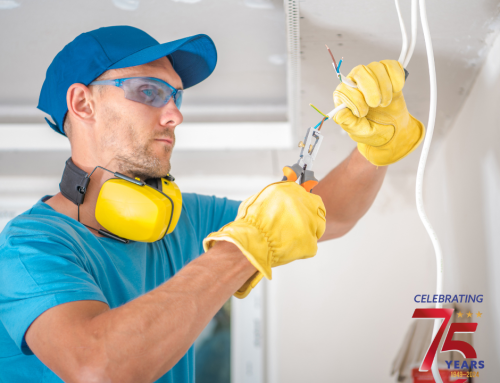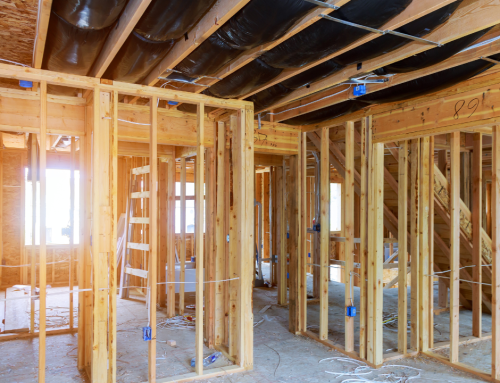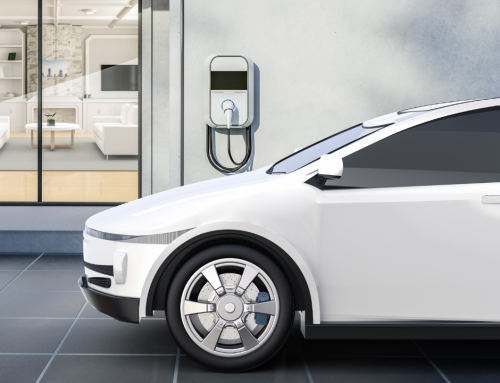It’s an unfortunate reality for many homeowners: power outages. From severe weather events to aging infrastructure, there is a multitude of reasons why you may find yourself in the dark. When this happens, a few options are available to keep crucial systems running until the power comes back on.
A Temporary Solution: Portable Generators
A portable generator is a good way to bridge the gap in your home until your power is restored. Portable generators are relatively inexpensive and easy to use, and depending on the model you choose, they can provide enough energy to power some of your essential appliances and electronics. They typically provide anywhere from 3,500 to 9,000 watts of power and are powered by gasoline, diesel or propane.
There are a few drawbacks to portable generators. Typically, they will only run as long as you’re adding fuel, and you’ll be running extension cords from the generator to the items you want to keep powered. While a portable generator cannot run your home’s furnace or central air system, it should power a small space heater and some lamps or your home’s fridge & freezer, keeping you safe and food from going to waste. You might also use it to power a sump pump if flooding is a possibility.
Once you have your generator connected, it is important to remember that not all appliances can be powered at once. To avoid overloading the generator, turn on items one at a time, starting with the most essential items. When using a portable generator, it is also important to follow safety guidelines and only operate it in well-ventilated areas away from open windows and doors.
Getting More from Your Portable Generator
A portable generator can be an effective way to get power during an outage. But if you need to run more than just a few lights and a few appliances, you’ll need to go beyond the basics. You can get more from your portable generator by connecting it to your home’s electrical panel with either a transfer switch or a GenerLink.
A transfer switch is a safe way to connect your generator to your home’s electrical panel, allowing you to select which circuits receive power during an outage. This method requires you to turn off the main breaker in your panel before connecting the transfer panel to your generator. You will need a generator cable to connect a portable generator to your home’s electrical system. The cable should be rated for the wattage of the generator and be long enough to reach from the generator to the electrical panel. Most transfer switches or subpanels are restricted to one or two 240-volt circuits rated at 15-amps or 20 amps, so the number of things you can run is limited.
Another option for connecting your portable generator to your electrical panel is to install a GenerLink. This device is installed outside the electrical panel and is connected directly to your portable generator. It’s an easier way to connect your generator to the electrical panel. A GenerLink gives you the flexibility to select the appliances you want to run from your home’s breaker panel up to the capacity of your generator. Since a GenerLink uses your existing breaker panel, you can operate any 120-volt appliance and most 240-volt appliances.
While both a transfer switch or panel and a GenerLink are convenient ways to power your home during an outage, the amount of power is limited by the generator’s capabilities, so you’ll need to selectively choose which appliances and circuits to power during an outage. Both transfer panels and GenerLinks provide convenient and safe ways to use a portable generator during an outage. They allow you to select which circuits and appliances you want to power and ensure your generator won’t overload your electrical system.
A More Permanent Power Solution
If you’re looking for a more permanent solution to protect you and your family during long-term outages, then a whole-home generator may be the right choice. Whole-home generators provide consistent, reliable power when the grid fails, making them perfect for anyone living in an area prone to frequent outages.
A whole-home generator is designed to provide a reliable and continuous backup power source for your entire home. It’s installed outside of your home, and it’s connected to your home’s electrical panel. When the power goes out, a whole-home generator automatically kicks in. You might notice the power flicker for a second or two, but the process is seamless otherwise. Typically powered by propane or natural gas, a whole-home generator is convenient, with no downtime, extension cords or gas cans required. These systems are a more expensive option but a permanent one.
Choosing the Best Generator Solution for You
It’s important to talk to a licensed electrician to determine the best size and type of generator for your home. They will help you determine the amount of power you need, calculate the load for each circuit, and provide installation and maintenance services.
When it comes to dealing with power outages, the best choice for you depends on a few factors. Firstly, consider how often power outages occur in your area. If they happen frequently or last more than a few hours, a permanent solution such as a whole-home generator may be your best option. On the other hand, if you experience fewer power outages, a portable generator may provide enough coverage for your needs.
Another factor to consider is the size of your home and the wattage needed to keep your home running during an outage. Whole-home generators can produce more wattage than portable generators, so they can power multiple appliances and electrical circuits simultaneously. Portable generators, on the other hand, are usually limited to powering one or two circuits and typically require manual setup and connection each time it’s used.
Finally, consider how much you’re willing to spend on a generator solution. Whole-home generators cost more than portable generators due to their installation requirements and larger wattage capabilities. But the peace of mind that comes with never having to worry about an outage again may be worth the higher cost.
Ultimately, the best generator solution for you depends on your individual needs. Doing your research and finding the right solution can help ensure that you’re prepared when the power goes out.
No matter your power needs, making sure your home and family are safe during a power outage is essential. Having a generator on hand can give you peace of mind knowing that your home has the power it needs to keep your family safe. We’ve put together this guide to help you find the right generator solution for you, but if you’d like more help, our team at Atel Electric is here to answer your questions. Reach out today to see what generator solution will work best for your home.





